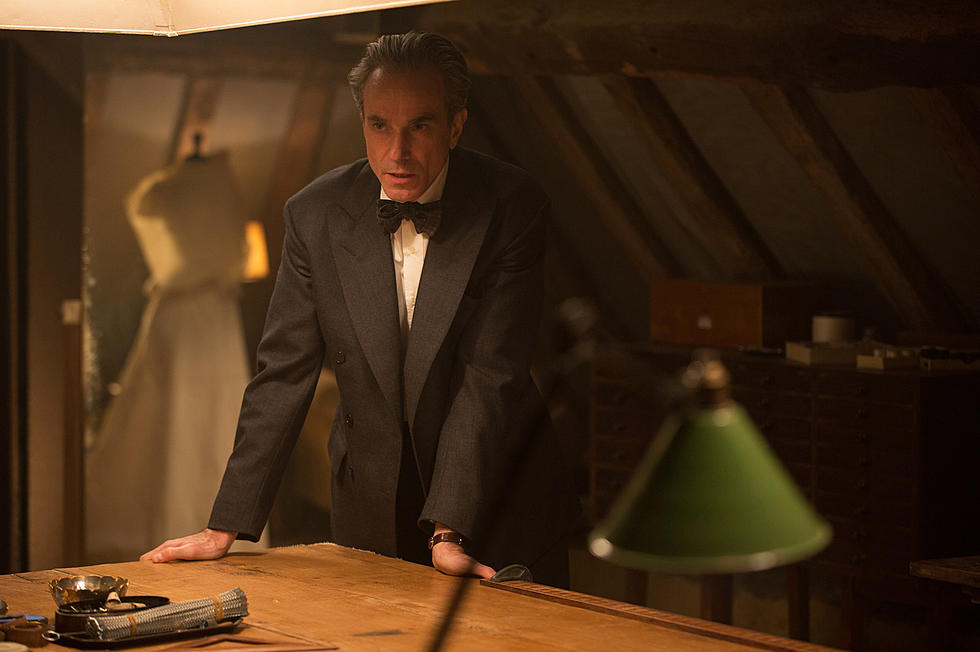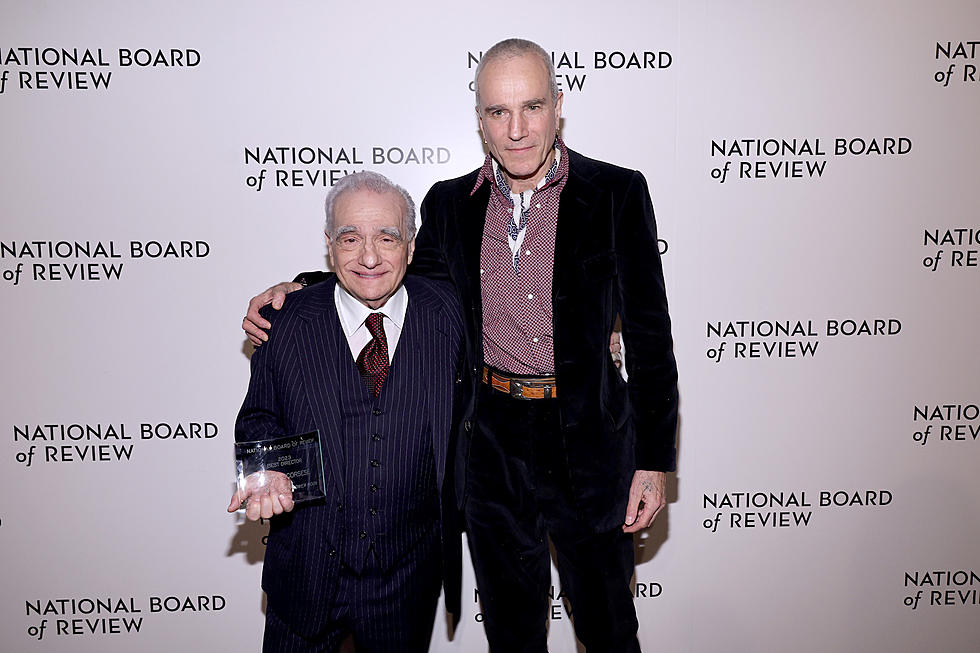
‘Phantom Thread’ Review: Paul Thomas Anderson and Daniel Day-Lewis Fashion Another Hit
On his very first date with the woman who will become his muse, fashion designer Reynolds Woodcock tells her an intimate secret: You can sew almost anything in the lining of a coat. On this particular evening, Reynolds’ sport coat hides a locket of hair from his mother, who he reveres as the person who taught him his trade. Later, we see him sew the name of the muse - Alma - into a dress.
This personal touch makes a convenient metaphor for directors and their films; all great movie artists leave hidden personal touches in their work. It’s worth considering what writer/director Paul Thomas Anderson and star Daniel Day-Lewis may have tucked away below the surface of Phantom Thread, their fascinating new film. In its early scenes, it is all about Day-Lewis’ Reynolds, a brilliant but irascible designer. Then its story expands to include Alma, and her attempts to maintain a relationship with the mercurial Reynolds. In doing so, it suggests a very personal subtext to this movie about how hard (but potentially rewarding) it is to live with great but difficult artists.
This reading seems particularly apt if the rumors are true, and this really is Daniel Day-Lewis’ final role before retirement. For 30 years, Day-Lewis has reigned as one of the most respected movie actors of his generation, famous (or perhaps notorious) for his intense Method technique; supposedly he never broke character on the set of Steven Spielberg’s Lincoln and spent his lunches on Martin Scorsese’s Gangs of New York sharpening his character’s knives. It doesn’t seem like a stretch to draw a comparison between Day-Lewis’ obsessive preparations and the toll they could take on the people in his private life, and Reynolds’ ornery demands of his staff and loved ones, and to consider Phantom Thread as part curtain call and part act of self-reflection by a man taking stock of his life and reckoning with the cost of making beautiful art for a living.
Reynolds’ particular demands require his employees at the House of Woodcock to tend to his every whim and demand. His breakfasts are a sacred time of quiet contemplation; any interruption is treated like a personal betrayal. Heaven help anyone who has to deliver bad news, or even benign news like a wedding invitation, during his tea. And don’t you dare butter your toast loudly, unless you want a lecture about how movement and noise can be terrible distractions.
This is one of Alma’s (Vicky Krieps) earliest lessons about life with Reynolds. Ironically and perhaps symbolically, she first meets the designer when she serves him an enormous breakfast as the waitress at a hotel he visits after dismissing — or rather after having his sister and assistant Cyril (Lesley Manville) dismiss — his previous muse. Reynolds is instantly smitten with Alma. He invites her to dinner, and then woos her with refined manners and a private dress fitting. (Private, at least, until Cyril shows up and watches the whole thing.) Soon, Alma moves in to the House of Woodcock, where she becomes one of his models, workers, and Reynolds’ lover.
Then Alma’s foibles begin to grate on Reynolds and violate the sanctity of his routine. In most of Reynolds’ relationships, that would be the beginning of the end. But Alma is too strong-willed to allow herself to be brushed aside. She concocts a plan to insinuate herself into his life in a more serious way, which leads to a series of surprises all through the film’s third act.
Alma shares her first name with the wife of Alfred Hitchcock (whose last name isn’t all that far off from Woodcock, come to think of it), who frequently collaborated with her famous husband on his movies, although she rarely received the credit she was due. Phantom Thread isn’t exactly a thriller, but as Reynolds and Alma’s relationship intensifies so does the tension, and the mounting suspense in the House of Woodcock recalls a few Hitchcock’s classics. (The power dynamics between Reynolds, Cyril, and Alma particularly reminded me of Rebecca.) At various points, Phantom Thread is also a character study, a dark domestic comedy, and what used to be called a “woman’s film.”
It is also barely recognizable as a “Paul Thomas Anderson film,” at least as that phrase used to be understood. Anderson’s early movies — Hard Eight, Boogie Nights, Magnolia — all had a shared sensibility. But in recent years, Anderson’s moved away from the bombastic, high-energy style that defined his work. Phantom Thread is classical and deliberate, with few of his former signatures like ostentatious flourishes of camera, editing, or music.
That may frustrate some Anderson fans, but Phantom Thread’s luxurious but restrained aesthetic perfectly matches Reynolds Woodcock’s approach to design. His dresses are gorgeous but not flamboyant, and the same could be said of Phantom Thread. The cinematography by an uncredited Anderson is lush yet understated, and the score by Jonny Greenwood helps create an atmosphere that is appealing yet isolating. And while Anderson’s screenplay is far from his most quotable, the bubbling strain between Reynolds and Alma yields some of his most dryly funny sequences. (After you see Phantom Thread, you will never look at a plate of asparagus the same way again.)
During Phantom Thread I became totally immersed in its world and characters. Afterwards, I kept thinking about Anderson and Day-Lewis, who are both married, and the parallels between fashion and filmmaking. Reynolds Woodcock’s haute couture clothes are desired by women everywhere because of their stark beauty and meticulous craftsmanship. Phantom Thread possesses those qualities as well. The only thing that stops me from calling this haute couture filmmaking is the fact that haute couture clothes are typically made with a specific client in mind, and tailored to their tastes and measurements, and that’s not how moviemaking works. Unless, of course, Anderson and Day-Lewis cared less about their potential mass audience and made Phantom Thread for a couple very specific viewers they knew intimately well.
Gallery - Overlooked Films and Performances From 2017:
More From ScreenCrush









